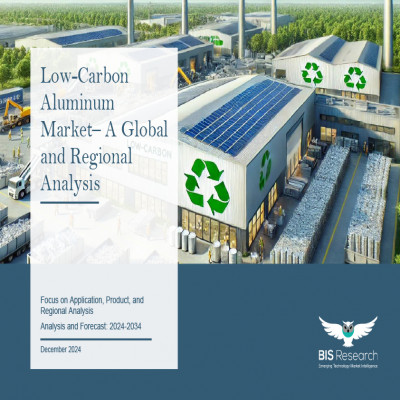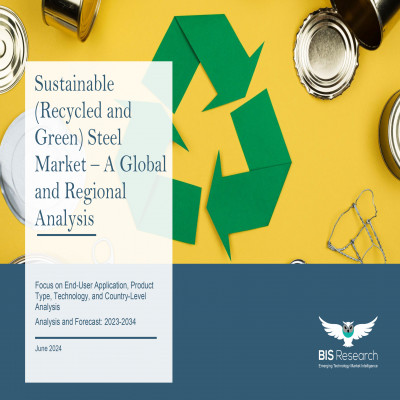Low-Carbon Construction Material Market: Industry Overview
The demand for various products, such as low-carbon aluminum, sustainable steel, recycled plastic, mass timber, and green concrete, within the low-carbon construction material market is anticipated to grow owing to the increasing demand from the building and construction industry. Furthermore, it is anticipated that during the projected period 2025-2034, the increasing adoption of sustainable products of low-carbon construction material in the sustainable construction industry across several emerging and advanced economies, including the U.S., China, India, Italy, France, and the U.K., is expected to further fuel the advancement of the global low-carbon construction material market. However, the high prices associated with low-carbon construction materials and uncertain macroeconomic conditions might act as a challenge to the growth of the market.
Market Lifecycle Stage
The low-carbon construction material market is in the growth phase. Increased investment and research and development activities are expected to boost the market. Furthermore, high demand for low-carbon construction materials due to growing green building trends and rising government initiatives, such as incentives and tax credits for low-carbon materials, are expected to fuel the demand for sustainable construction materials, thereby bolstering the low-carbon construction material market. Moreover, the low-carbon construction material industry is expected to benefit from the rising awareness of the environment and the increasing adoption of sustainable construction materials in advanced and emerging economies.
Industrial Impact
The products within the low-carbon construction material market offer numerous advantages. Their renewable nature ensures a reduced carbon footprint, contributing to mitigating climate change and lowering greenhouse gas emissions. Furthermore, low-carbon construction materials from renewable sources, such as mass timber, offer a reduction in carbon emission, making them suitable for use in various green building applications. Furthermore, low-carbon construction material has a moderate-to-high impact on end-user industries; however, in the future, with increasing penetration of residential, commercial, industrial, and other applications of the building and construction industry, their impact and adoption is anticipated to increase and drive the growth of global low-carbon construction material market.
Market Segmentation:
Segmentation 1: by Application
• Residential
• Commercial
• Industrial
• Others
The residential segment leads the global low-carbon construction material market.
Segmentation 2: by Material
• Plastic
o Bio-Based Plastic
o Recycled Plastic
• Metal
o Sustainable Steel
o Low-Carbon Aluminum
o Others
• Mass Timber
o Cross-Laminated Timber
o Nail-Laminated Timber
o Glue-Laminated Timber
o Others
• Green Concrete
• Green Tiles
• Low-Carbon Bricks
• Others
The global low-carbon construction material market is estimated to be led by the metal segment in terms of material.
Segmentation 3: by Region
• North America - U.S., Canada, and Mexico
• Europe - U.K., Germany, France, Italy, Spain, and Rest-of-Europe
• Asia-Pacific- China, Japan, South Korea, India, Australia, and Rest-of-Asia-Pacific
• Rest-of-the-World - South America and Middle East and Africa
In the low-carbon construction material market, based on region, North America is anticipated to gain traction in terms of adoption, owing to the continuous growth in the adoption of low-carbon construction materials such as low-carbon aluminum, sustainable steel, mass timber, recycled plastic, bio plastic, and mass timber, along with the presence of key manufacturers in the region.
Recent Developments in the Global Low-Carbon Construction Material Market
• In July 2023, Cemex, S.A.B. de C.V. announced record sales of its Vertua net-zero carbon (CO2) concrete in Colombia, crossing 100,000 cubic meters of volumetric production.
• In July 2023, CarbonCure Technologies Inc. announced that it secured an investment of $80 million in a new equity round that was led by Blue Earth Capital. The new funding round also witnessed support from the company’s existing shareholders. The investment would help the company achieve its goal of reducing and removing millions of metric tons of CO2 from the atmosphere per year.
• In September 2022, CarbonCure Technologies Inc. announced the launch of CarbonCure Express EPD, an environmental product declaration service that would help concrete manufacturers measure the carbon impact of their concrete offerings, thereby helping them strengthen their positions in the low-carbon or green building industry.
• In May 2023, SSAB AB announced a partnership with BE Group, a steel service firm operating in Sweden, the Baltic States, Finland, and Poland. Under this partnership, SSAB AB would help the latter identify demands and opportunities for fossil-free steel in the BE Group’s key markets, including manufacturing and construction. Based on the identification of demand for fossil-free steel, the partnership would help meet the technical, sustainable, and communication needs of customers BE Group serves.
• In March 2021, ArcelorMittal launched XCarb, an umbrella brand for its low, reduced, and zero-carbon steel products, thereby embarking on its commitment to the production of carbon-neutral steel by 2050. The company also announced three XCarb-branded initiatives, namely, XCarb green steel certificates, XCarb recycled and renewably produced, and XCarb innovation fund to support the launch of XCarb.
Demand - Drivers and Challenges
The following are the demand drivers for the low-carbon construction material market:
• Increase in Government Expenditures for Infrastructural Development
• Stringent Regulations and Carbon Neutrality Targets
• Energy and Cost Efficiency owing to the Use of Recycled Materials
• Growing Research and Development Activities to Achieve Near-Zero Emissions
The low-carbon construction material market is expected to face some limitations as well due to the following challenges:
• High Prices Associated with Low-Carbon Construction Materials
• Lack of Investments in the Green Building Materials Sector
• Uncertain Macroeconomic Conditions


